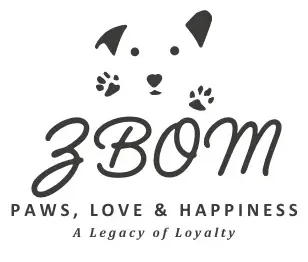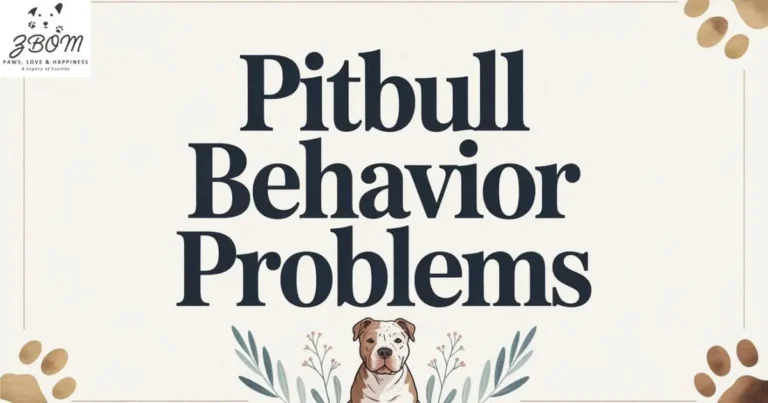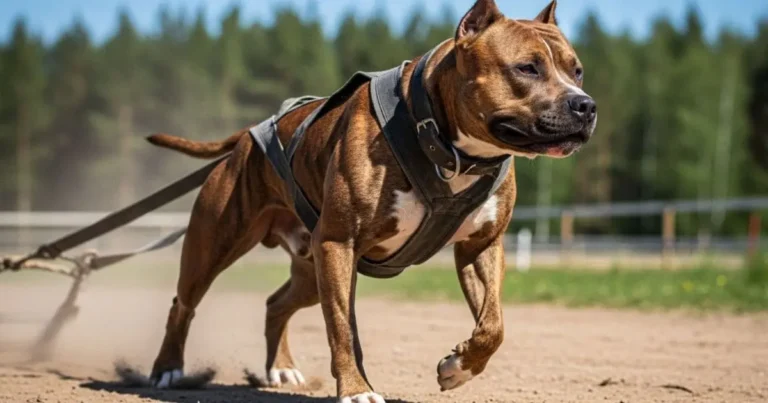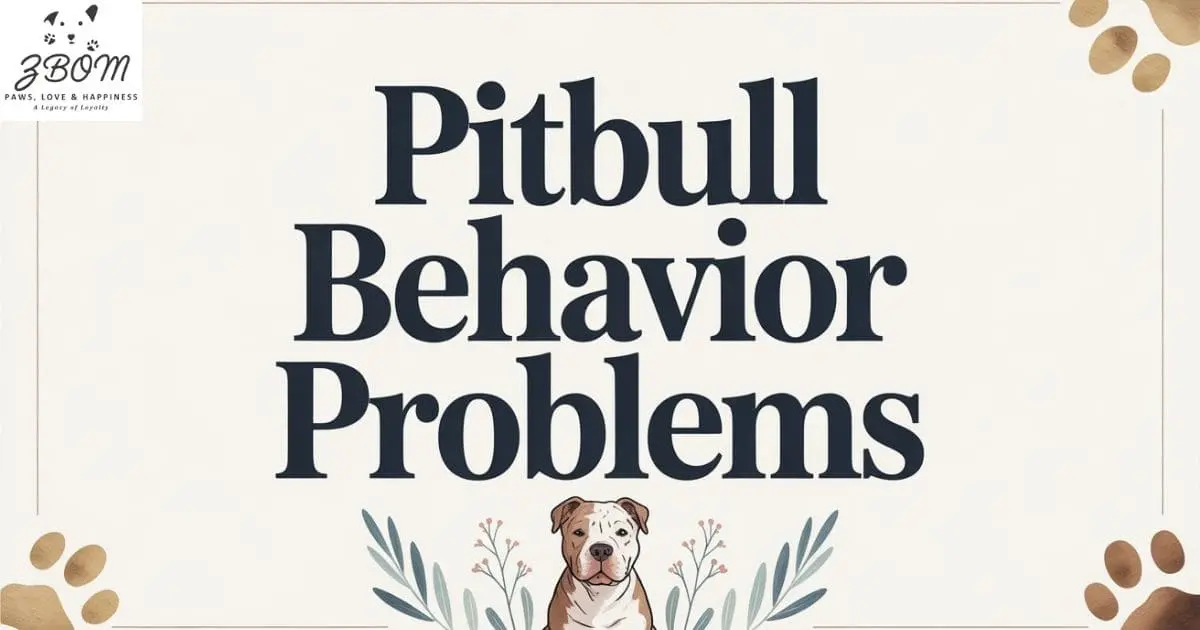
Pitbull Behavior Problems
Pitbull Behavior Problems have earned themselves quite a reputation over the years, and unfortunately, much of it comes wrapped in misunderstanding and unfair stereotypes. The truth is, these muscular, energetic dogs are incredibly loyal, affectionate, and eager to please when given proper guidance and training. But like any powerful breed with strong instincts and abundant energy, Pitbulls can develop behavioral issues when their needs aren’t met or when they haven’t been taught appropriate ways to channel their natural drives.
Whether you’re dealing with excessive jumping, leash pulling, territorial aggression, or anxiety-related behaviors, understanding where these problems come from is the first step toward fixing them. Many Pitbull Behavior Problems system from boredom, lack of socialization, inconsistent training, or simply not understanding what their owner expects from them. These dogs were bred to be athletic and determined, which means they need both physical exercise and mental stimulation to stay balanced and happy.
Without proper outlets, that energy and drive can manifest in ways that frustrate owners and create genuine safety concerns. The good news is that Pitbulls are highly trainable and respond remarkably well to positive reinforcement methods when approached with patience and consistency. Addressing behavior problems isn’t about dominating your dog or using harsh corrections—it’s about building clear communication, establishing boundaries, and creating an environment where your Pitbull understands what’s expected and feels secure in their role within your family.
Whether you’re dealing with a puppy developing bad habits or an adult dog with ingrained issues, the right approach can transform challenging behaviors into opportunities for bonding and growth.
Also Read: How Many Days Is A French Bulldog pregnant
Short Answer About Pit Bulls Are Bred to Be Aggressive
The claim that pit bulls are bred to be aggressive is a misconception. Historically, they were bred for strength and tenacity, not hostility toward humans. Pitbull Behavior Problems A dog’s behavior is shaped mostly by training, socialization, and environment. Many pit bulls are gentle, loyal, and friendly companions when raised properly. Aggression is an individual trait, not something determined by breed alone.
1. Pit Bulls Are Bred to Be Aggressive
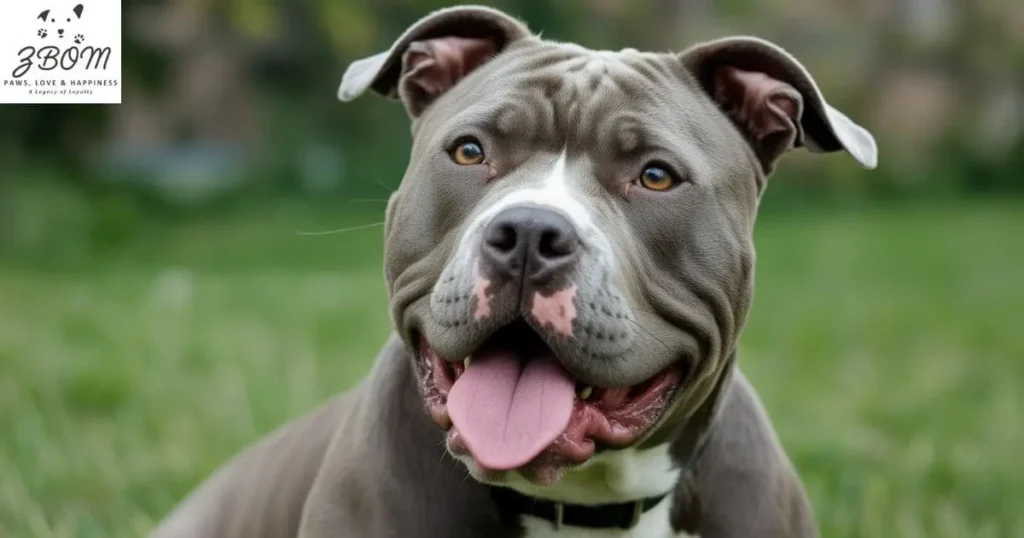
Pit bulls have a complex genetic disposition toward aggression that stems from their breeding history. American pit bull terriers were selectively bred for dog fighting and blood sports, creating dogs with inherited traits focused on combat ability. This breeding for negative traits established dog aggression as part of their pit bull genetics.
Backyard breeders and those involved in the illegal dog fighting realm continue breeding for negative traits, perpetuating aggressive breeds characteristics. Pit bull terrier bloodlines historically emphasized tenacious fighters qualities, making aggression a genetic disposition rather than solely environmental.
Whelping Box French Bulldog, However, the nature vs nurture debate is critical. While genetics plays a part in pit bull behavior, the nurture aspect of their upbringing significantly influences whether inherited traits manifest as problematic dog aggression. Responsible owners who implement proper training and early socialization can manage these genetic disposition factors, while irresponsible owners who neglect training allow negative behavior to flourish.
Proper training and correct training methods using positive reinforcement help counteract genetic disposition toward aggression. Experienced dog owners understand that pit bull genetics don’t guarantee aggressive breeds behavior in every individual, but the potential exists due to generations of selective breeding.
2. Pit Bulls Are Unpredictable
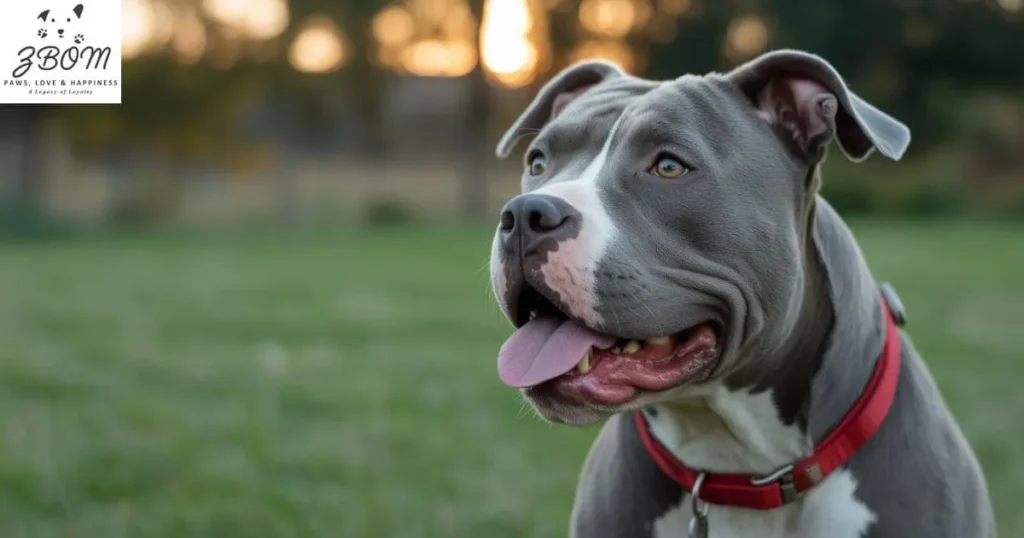
Pit bull behavior can appear unpredictable, particularly regarding temperament change during pit bull maturity. Adult pit bulls may show sudden shifts in behavior that seem to come without warning, though these changes typically relate to genetic disposition and pit bull maturity stages.
Pitties may display people aggression or dog aggression unexpectedly, especially if they lack early socialization and proper training. This unpredictable nature often reflects inherited traits becoming apparent as pit bulls reach full physical maturity between 18 months to three years old.
Also Read: How Many Puppies Do French Bulldogs Have
The unpredictable reputation stems partly from pit bulls not showing typical warning signs before attacks. Their high tolerance for pain and tenacious fighters mentality mean they may not display natural behavior cues other breeds exhibit. Inexperienced owners often miss subtle signals preceding aggressive episodes.
Separation anxiety can trigger unpredictable bad behavior including destructive chewing, howl continuously, and bathroom accidents. Resource guarding and possessive aggression may emerge suddenly when pit bulls feel their food, toys, or territory is threatened. This territorial behavior reflects protective nature combined with genetic disposition.
Early training beginning at six to eight weeks helps create more predictable pit bull behavior. Consistent training with experienced dog owners establishes boundaries that reduce unpredictable responses. Without proper training and early socialization, pit bulls remain more unpredictable throughout their lives.
3. Pit Bulls Have a High Tolerance for Pain
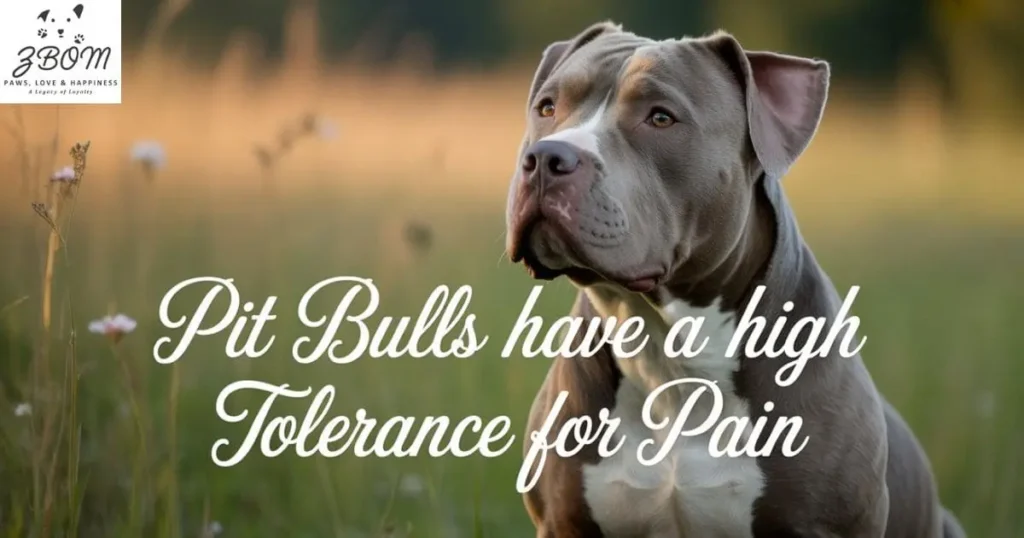
Pit bulls possess exceptional high tolerance for pain that distinguishes them from most other breeds. This high tolerance for pain was deliberately selected through pit bull breeding for dog fighting and blood sports. Fighting dogs needed to continue battling despite injuries, making pain tolerance a critical inherited trait.
The high tolerance for pain in pit bulls creates several challenges for responsible owners. Pitties may not show obvious signs of injury or illness, making health problems difficult to detect. Regular health check-ups with proper vet care become essential because pit bulls mask symptoms that other dogs would display clearly.
This pain tolerance contributes to mauling severity. When pit bulls engage in attacks, their high tolerance for pain means they don’t respond to defensive measures that would stop other breeds. They continue aggressive actions despite being hit, kicked, or injured themselves.
Also Read: When Can Male Dogs Get Females Pregnant
Anabolic steroids administered by some irresponsible owners further increase pain tolerance and aggression. Drug dealers and those in the criminal element often inject pitties with steroids and amphetamines to enhance fighting ability and increase aggression.
The high tolerance for pain also affects training. Punishment-based correction methods prove ineffective because physical discomfort doesn’t deter pit bulls as it might other breeds. Positive reinforcement training approaches work better than methods relying on physical corrections.
Skin infections, allergies, hip dysplasia, and skin cancer may progress unnoticed due to high tolerance for pain. White fur pitties particularly prone to skin cancer require vigilant monitoring since they won’t display typical pain responses until conditions become severe.
French Bulldog Litter Size, The high tolerance for pain in pit bulls creates several challenges for responsible owners. Pitties may not show obvious signs of injury or illness, making health problems difficult to detect. Regular health check-ups with proper vet care become essential because pit bulls mask symptoms that other dogs would display clearly.
This pain tolerance contributes to mauling severity. When pit bulls engage in attacks, their high tolerance for pain means they don’t respond to defensive measures that would stop other breeds. They continue aggressive actions despite being hit, kicked, or injured themselves.
Anabolic steroids administered by some irresponsible owners further increase pain tolerance and aggression. Drug dealers and those in the criminal element often inject pitties with steroids and amphetamines to enhance fighting ability and increase aggression.
The high tolerance for pain also affects training. Punishment-based correction methods prove ineffective because physical discomfort doesn’t deter pit bulls as it might other breeds. Positive reinforcement training approaches work better than methods relying on physical corrections.
Also Read: How Much Are Fluffy French Bulldogs
Skin infections, allergies, hip dysplasia, and skin cancer may progress unnoticed due to high tole
4. They Are Tenacious Fighters

Tenacious fighters describes pit bulls perfectly, reflecting their breeding history for combat. This tenacity represents a core inherited trait that makes pit bulls particularly dangerous during aggressive episodes. Pit bull terriers were selectively bred to never surrender or retreat, creating tenacious fighters who continue despite obstacles.
The tenacious fighters mentality combines with high tolerance for pain to produce aggressive dogs that won’t disengage once committed. During dog attacks, pit bulls demonstrate extreme tenacity, maintaining their assault regardless of intervention attempts. This stubborn nature and determination make stopping mauling incidents exceptionally difficult.
Dog fighting operations specifically selected for tenacious fighters qualities. Fighting dogs that gave up were eliminated from breeding programs, while tenacious fighters that never quit were bred repeatedly. This created pit bull genetics emphasizing relentless aggression and unwillingness to back down.
Also Read: Long Haired French Bulldog Cost
Tenacity isn’t inherently negative. Responsible owners channel this trait positively through activities like flyball and frisbee, running and walking, and other mental stimulation and physical stimulation exercises. The tenacious nature makes pit bulls excellent at tasks requiring persistence when properly directed.
However, tenacity combined with genetic disposition toward dog aggression creates significant risks. Adult pit bulls displaying territorial behavior or resource guarding become particularly dangerous due to their tenacious fighters mentality. They won’t release food, toys, or territory without intense struggle.
Proper training must address tenacity early. Early training starting at six to eight weeks helps shape how pit bulls express their tenacious nature. Experienced dog owners understand managing tenacity requires consistent training with firm boundaries and positive reinforcement.
Also Read: French Bulldog Breeders Michigan
The tenacious fighters trait makes pit bulls the breed of choice for criminals and drug dealers seeking guard dogs. Their unwillingness to quit makes them effective protection animals but also contributes to their bad reputation and negative stigma.
5. Pit Bulls Are Involved in Maulings More Often Than Other Dogs

Pit bulls dominate mauling statistics disproportionately. Despite representing only 6% of total dogs, pit bulls account for 68% of dog attacks since 1982 and 52% of deaths resulting from attacks. These mauling numbers establish pit bulls as the most dangerous breed statistically.
Mauling incidents involving pit bulls differ from typical dog attacks due to their tenacious fighters nature. Pit bull maulings involve sustained assault, multiple bite locations, and resistance to intervention. Their strong bite force combined with tenacity produces devastating injuries during mauling episodes.
The mauling pattern reflects pit bull breeding for fight and kill purposes. When aggressive dogs like pit bulls attack, their genetic disposition drives them to continue until physically separated. Mauling victims suffer extensive trauma because pit bulls don’t release after initial bite.
Also Read: What Are Fluffy Frenchies Mixed With
Fatal attack statistics show pit bulls cause more dog-bite-related deaths than any other breed. CDC data confirmed pit bulls were responsible for the majority of attack fatalities between 1978 and 1998. Current dog attack data continues showing pit bulls leading fatal attack statistic categories.
Inexperienced owners contribute significantly to mauling incidents. People adopt pitties without understanding their muscular build, strength, and genetic disposition toward dog aggression. Without proper training and early socialization, these dogs become aggressive toward other dogs and sometimes people.
Irresponsible owners involved in illegal dog fighting deliberately train pit bulls for mauling ability. They starve and mistreat dogs, beat them, and inject anabolic steroids to increase aggression. These abused fighting dogs eventually cause mauling incidents when they escape or are abandoned. pit bulls as the most dangerous breed statistically.
Mauling incidents involving pit bulls differ from typical dog attacks due to their tenacious fighters nature. Pit bull maulings involve sustained assault, multiple bite locations, and resistance to intervention. Their strong bite force combined with tenacity produces devastating injuries during mauling episodes.
How Much Is A Frenchie, The mauling pattern reflects pit bull breeding for fight and kill purposes. When aggressive dogs like pit bulls attack, their genetic disposition drives them to continue until physically separated. Mauling victims suffer extensive trauma because pit bulls don’t release after initial bite.
Fatal attack statistics show pit bulls cause more dog-bite-related deaths than any other breed. CDC data confirmed pit bulls were responsible for the majority of attack fatalities between 1978 and 1998. Current dog attack data continues showing pit bulls leading fatal attack statistic categories.
Inexperienced owners contribute significantly to mauling incidents. People adopt pitties without understanding their muscular build, strength, and genetic disposition toward dog aggression. Without proper training and early socialization, these dogs become aggressive toward other dogs and sometimes people.
Irresponsible owners involved in illegal dog fighting deliberately train pit bulls for mauling ability. They starve and mistreat dogs, beat them, and inject anabolic steroids to increase aggression. These abused fighting dogs eventually cause mauling incidents when they escape or are abandoned.
Also Read: Why Does My Frenchie Keep Throwing Up
Backyard breeders producing poorly bred pit bulls through overbreeding and inbreeding create
Backyard breeders producing poorly bred pit bulls through overbreeding and inbreeding create dogs with genetic defects and unstable temperaments prone to mauling. These dogs flood animal shelters and eventually reach inexperienced owners who cannot manage them, leading to more mauling statistics.
6. Their Size and Muscular Build Is Intimidating
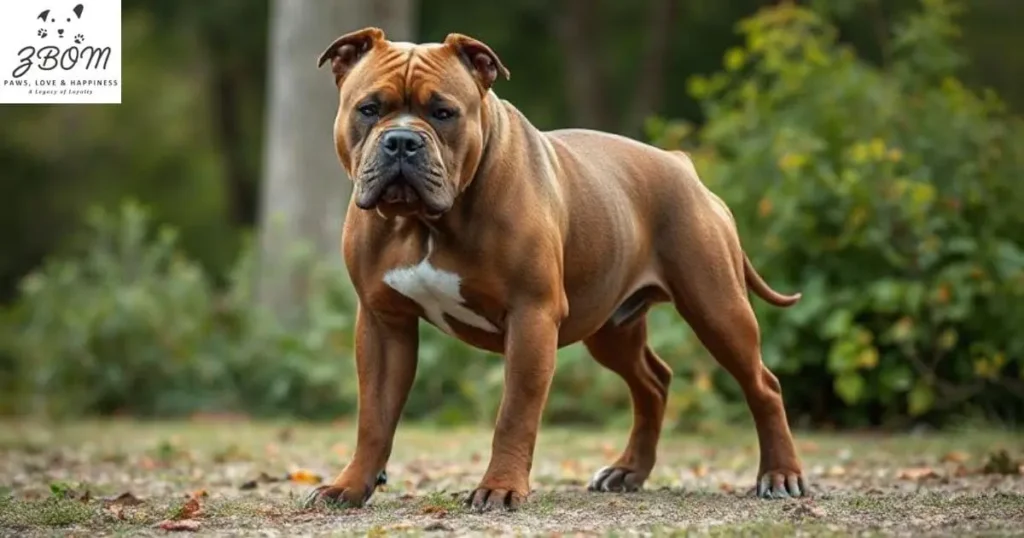
The size and muscular build of pit bulls creates an intimidating sight for many people. American pit bull terriers possess powerful physiques with broad chests, strong legs, and well-defined muscles. This muscular build combined with their size makes pit bulls appear threatening even when displaying natural behavior.
Pit bull size and strength makes them unsuitable for inexperienced owners. The powerful pit bull physique requires owners who can physically control these aggressive breeds during walks or when visitors arrive. Irresponsible owners who cannot manage their pitties’ size and strength create dangerous situations.
Also Read: How To Cool Down A French Bulldog
Many disreputable owners inject their pit bulls with anabolic steroids to increase size and aggression. This artificial enhancement makes already intimidating pit bulls even more frightening in appearance and behavior. The steroids create unnaturally muscular dogs with heightened aggressive tendencies.
The intimidating appearance contributes to pit bulls being the breed of choice for criminals and drug dealers. The criminal element uses pit bulls as guard dogs specifically because their size and muscular build frightens potential intruders. This association with criminality further damages pit bull reputation.
Size and strength also contributes to injury severity during dog attacks. When powerful pit bulls engage in mauling, their muscular build enables sustained assault. The combination of size, strength, strong bite force, and tenacity produces devastating injuries and fatal outcomes.
Also Read: How Often Should I Bathe My Frenchie
Jumping on people becomes particularly problematic due to pit bull size and muscular build. What might be minor annoyance with smaller breeds becomes potentially injurious when powerful pit bulls leap onto visitors. Their size and momentum can knock down adults and seriously harm children.
The intimidating nature affects pit bull owners as well, creating negative stigma. People walking pitties face discrimination because others perceive the muscular build as threatening. This negative stereotype persists even when individual pit bulls display friendly behavior.
7. Is Their Bark Worse Than Their Bite
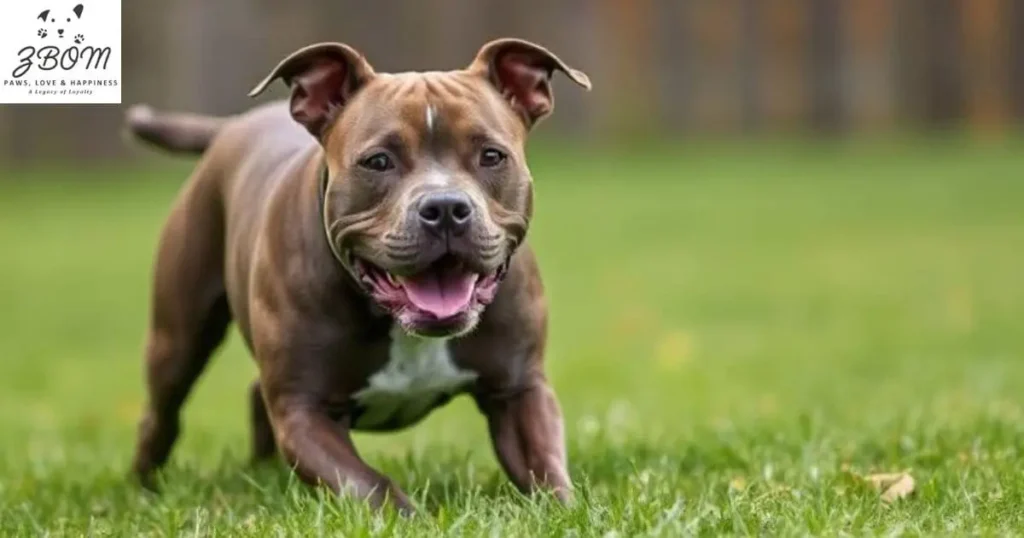
Pit bulls are actually moderate barkers rather than prolific vocalizers. Individual pitties vary in barking frequency, but generally bark only when given reason—to alert owners of perceived danger, when afraid, bored, or excited. Their bark and growl sounds are more intimidating than their actual barking frequency.
The deep throaty bark of pit bulls sounds like direful warning despite them being moderate barkers. This growl and bark combination creates fearsome impression when these powerful dogs vocalize. The sound quality makes their bark particularly intimidating even though they don’t bark as frequently as many breeds.
When pit bulls do bark, their size and muscular build amplifies the threatening effect. The deep vocal tones combined with intimidating physical presence makes their bark seem worse than reality. Responsible owners train their pitties to control barking through proper training methods.
Also Read: Why Is My Frenchie Shedding So Much
However, the bite is definitively worse than the bark with pit bulls. While they’re moderate barkers, their strong bite force and tenacious fighters mentality during attacks proves their bite capability exceeds their vocal warnings. Mauling statistics confirm pit bull bites cause more severe injuries than most breeds.
Separation anxiety may cause some pit bulls to howl continuously or bark excessively when left alone. This bad behavior reflects anxiety rather than typical barking patterns. Proper training and gradual conditioning help reduce anxiety-related vocalizations.
The bark serves as warning before aggressive episodes. Pit bulls displaying territorial behavior or resource guarding often bark and growl before escalating to bite. Experienced dog owners recognize these vocal warnings and intervene before situations deteriorate.
8. Pit Bulls Are Destructive Chewers
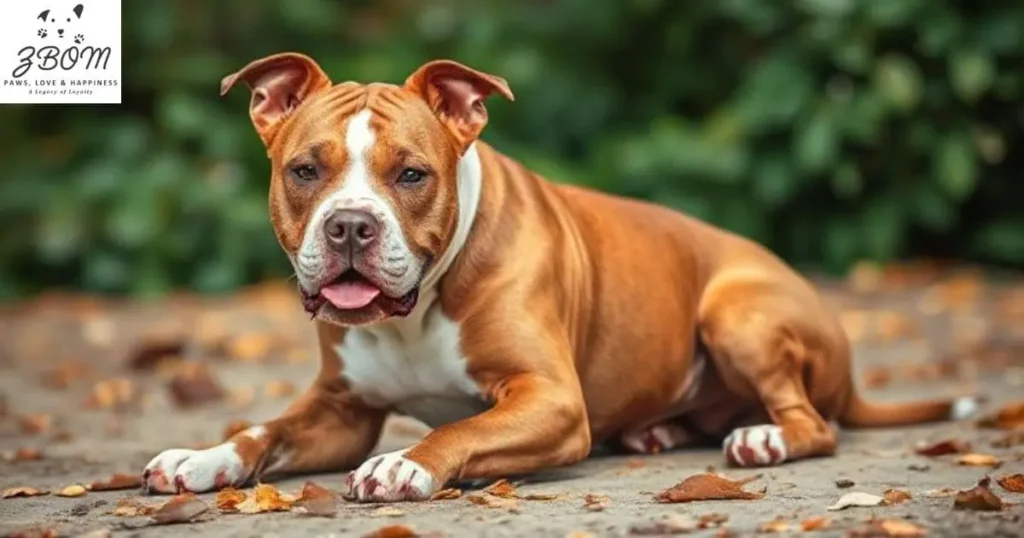
Destructive chewing ranks among the most common complaints about pit bulls. Pitties share this natural behavior with other breeds but demonstrate exceptional destruction levels. Some pit bulls chew through drywall, destroy furniture, and annihilate carpeting due to their strong bite force and determination.
Destructive chewing stems from multiple causes in pit bulls. Boredom triggers chewing in understimulated dogs. Pit bulls require copious amounts of exercise and mental stimulation to prevent bad behavior including destructive chewing. Without daily exercise and engagement, pitties redirect energy toward chewing household items.
Also Read: Do French Bulldogs Get Along With Other Dogs
Separation anxiety commonly causes destructive chewing in pit bulls. These dogs form close bonds with owners and struggle when left alone. Separation anxiety manifests through destructive actions including chewing, howl continuously, and bathroom accidents. This anxiety-driven behavior is the number one reason owners surrender pit bulls to animal shelters.
The strong bite force of pit bulls makes their destructive chewing particularly damaging. What other breeds might superficially damage, pit bulls completely destroy. Their powerful jaws and tenacious nature mean they continue chewing until objects are obliterated.
Do French Bulldogs Bite, Proper training helps mitigate destructive chewing. Early training establishes boundaries about appropriate chewing targets. Owners should provide chewing sticks and appropriate toys to redirect natural behavior constructively. Daily exercise reduces boredom-related chewing by exhausting physical energy.
Pit bull puppies particularly engage in destructive chewing during teething periods. Their razor-sharp teeth and exploratory mouthing and biting evolves into serious destructive chewing if not addressed. Consistent training from six to eight weeks old prevents chewing from becoming entrenched negative behavior.
Inexperienced owners often underestimate pit bull destructive chewing potential until significant property damage occurs. Responsible owners anticipate this behavior and implement preventive training and environmental management strategies.
9. Pit Bulls Frequently Jump up on People
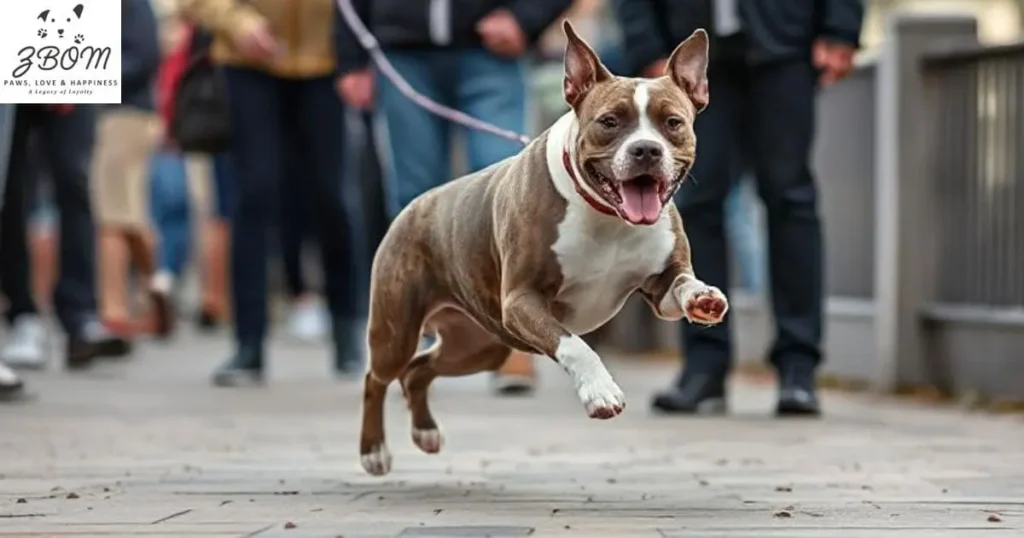
Jumping on people is common pit bull behavior stemming from their love of human interaction. Pit bulls jump to greet visitors, seeking eye-to-eye contact and attention. This jumping represents natural behavior for most dog breeds but becomes problematic due to pit bull size and strength.
The powerful pit bull physique makes jumping on people potentially injurious. While small breeds jumping causes minor annoyance, pit bulls can knock down adults and seriously harm children. Can A Goldendoodle Be Black, Their muscular build and momentum during jumping creates significant impact force.
Jumping behavior appears particularly intimidating when pit bulls leap at strangers. The combination of size, strength, and sudden movement frightens people unfamiliar with the dog’s friendly intentions. This jumping contributes to negative stigma and bad reputation even when dogs mean no harm.
Proper training must address jumping early in pit bull development. Early training teaches pitties to sit or stay down when greeting people. Consistent training using positive reinforcement rewards calm greeting behaviors instead of jumping.
Pit bull puppies often develop jumping habits when owners inadvertently reward the behavior. Inexperienced owners may find puppy jumping cute and fail to correct it. When adult pit bulls reach full physical maturity, the previously cute jumping becomes dangerous bad behavior.
Also Read: 10 Fun Facts About French Bulldogs
Jumping combined with mouthing and biting in puppies creates additional concerns. Young pit bulls that jump and mouth simultaneously establish negative behavior patterns. Owners must train against both jumping and biting during early training periods.
Responsible owners manage jumping through environmental control and training. Teaching alternative greeting behaviors prevents jumping before it becomes habitual. Experienced dog owners recognize that pit bull size and strength makes jumping management critical for safety.
10. Pit Bull Puppies Have a Mouthing and Biting Problem
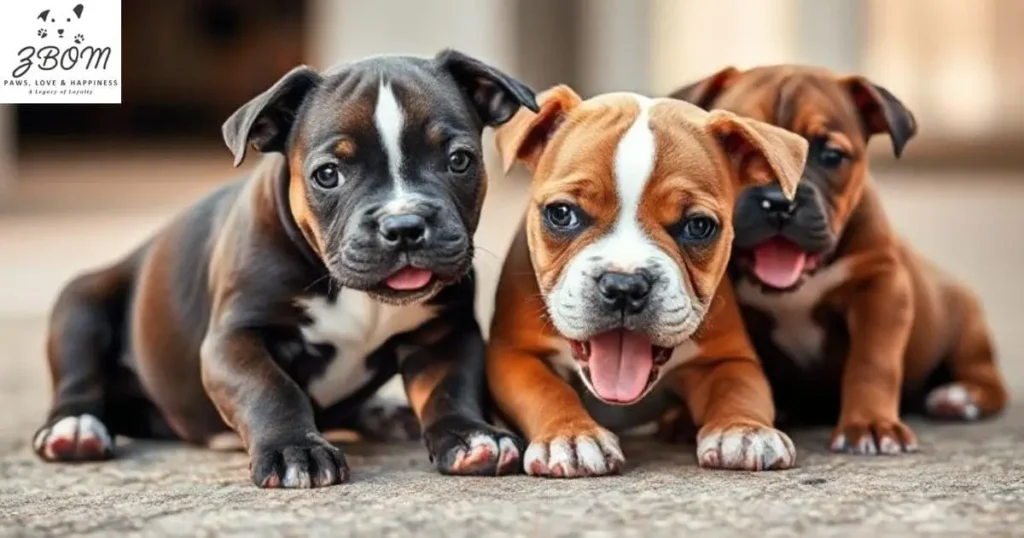
Pit bull puppies naturally engage in mouthing and biting like most puppy breeds. They bite from fear, during teething, or from over-exuberance. However, pit bull biting carries greater consequences due to their strong bite force potential as adult pit bulls.
Nipping and biting during play often seems cute to owners, leading them to tolerate or encourage this negative behavior. Inexperienced owners make critical mistakes by allowing puppy biting without correction. What feels merely uncomfortable from puppies with razor-sharp teeth becomes dangerous when adult pit bulls reach full physical maturity.
Mouthing represents exploratory behavior in young pit bulls, but without proper training, it escalates into serious biting problems. Early training starting at six to eight weeks old establishes that biting is unacceptable. Consistent training using positive reinforcement teaches puppies appropriate mouth use.
Also Read: Mini Long Haired Dachshund Grooming Styles
The genetic disposition of pit bulls toward aggression makes addressing puppy biting essential. Inherited traits related to strong bite force and tenacity mean adult biting can cause severe injuries. Breeding history for fighting makes bite inhibition training critically important.
Owners who reward puppy biting create future aggressive dogs. When pit bulls mature, their biting behavior reflects early training experiences. Irresponsible owners who failed to correct puppy nipping and biting face aggressive adult pit bulls with dangerous biting habits.
Nipping and biting during play often seems cute to owners, leading them to tolerate or encourage this negative behavior. Inexperienced owners make critical mistakes by allowing puppy biting without correction. What feels merely uncomfortable from puppies with razor-sharp teeth becomes dangerous when adult pit bulls reach full physical maturity.
Cocker Spaniel Groom, Mouthing represents exploratory behavior in young pit bulls, but without proper training, it escalates into serious biting problems. Early training starting at six to eight weeks old establishes that biting is unacceptable. Consistent training using positive reinforcement teaches puppies appropriate mouth use.
The genetic disposition of pit bulls toward aggression makes addressing puppy biting essential. Inherited traits related to strong bite force and tenacity mean adult biting can cause severe injuries. Breeding history for fighting makes bite inhibition training critically important.
Owners who reward puppy biting create future aggressive dogs. When pit bulls mature, their biting behavior reflects early training experiences. Irresponsible owners who failed to correct puppy nipping and biting face aggressive adult pit bulls with dangerous biting habits.
Proper training methods focus on redirecting mouthing toward appropriate toys and chewing sticks. Teaching bite inhibition through gradual pressure reduction helps puppies learn controlled mouth use. Experienced dog owners never tolerate puppy biting regardless of how harmless it seems initially.
Also Read: Grooming Tools For Golden Retrievers
Pit bull puppies that continue mouthing and biting beyond appropriate ages often develop aggressive tendencies. Com
Proper training methods focus on redirecting mouthing toward appropriate toys and chewing sticks. Teaching bite inhibition through gradual pressure reduction helps puppies learn controlled mouth use. Experienced dog owners never tolerate puppy biting regardless of how harmless it seems initially.
Pit bull puppies that continue mouthing and biting beyond appropriate ages often develop aggressive tendencies. Combined with separation anxiety, resource guarding, and territorial behavior, uncorrected biting creates multiply dangerous adult pit bulls.
11. Pit Bulls Tend to Resource Guard
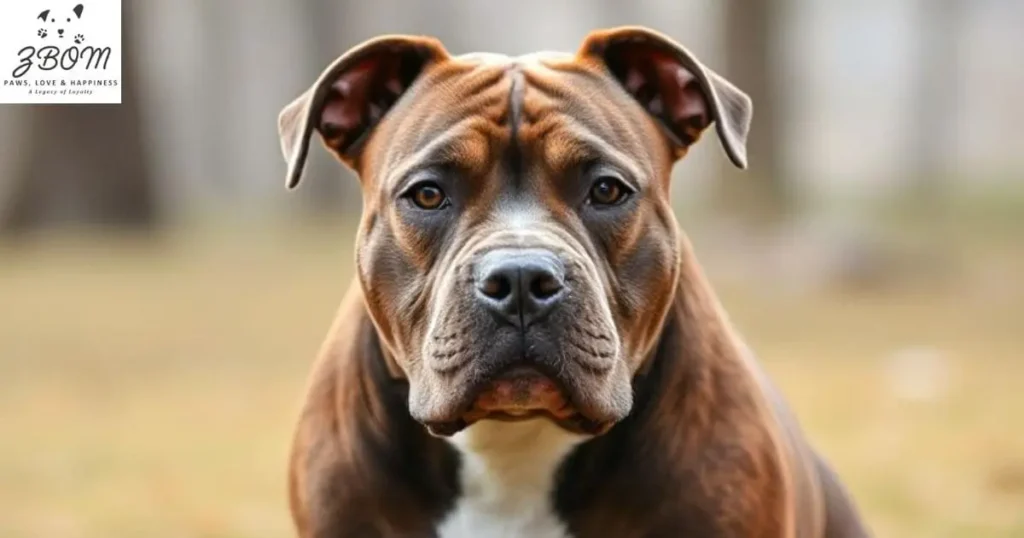
Resource guarding, also called possessive aggression, occurs when pit bulls become protective over their food, toys, or possessions. Pitties displaying resource guarding will bark, growl, or bare their teeth when people or animals approach their resources. This territorial behavior represents natural behavior developed for survival.
Genetics plays a part in resource guarding tendencies. The genetic disposition from breeding for fighting makes some pit bulls particularly prone to possessive aggression. Inherited traits include defending resources aggressively, which becomes dangerous in domestic settings.
Also Read: Can I Use Human Hair Conditioner On My Dog
Individual pit bulls vary in resource guarding intensity, but many adopted from animal shelters display this behavior due to unknown histories. Shelter dogs may have experienced abuse, neglect, or resource scarcity that warranted protective responses. Starve and mistreat experiences create lasting resource guarding behaviors.
Stress, medical issues, lack of mental stimulation and physical stimulation, and inadequate daily exercise contribute to resource guarding. Separation anxiety may intensify possessive aggression as pit bulls cling more desperately to possessions when anxious.
Resource guarding becomes particularly dangerous given pit bull size and strength. Adult pit bulls displaying possessive aggression can seriously injure owners, other pets, or visitors. Their strong bite force and tenacious nature during resource guarding episodes creates severe attack potential.
Proper training addresses resource guarding through gradual desensitization and positive reinforcement. Early training prevents possessive aggression from developing. Consistent training teaches pit bulls that people approaching resources predicts positive outcomes, not resource loss.
Also Read: How Much Do Golden Retrievers Shed
Inexperienced owners often escalate resource guarding by attempting forceful resource removal. Punishment-based approaches worsen possessive aggression rather than resolving it. Experienced dog owners use systematic training protocols respecting the natural behavior while establishing safe household management.
Territorial behavior extends beyond objects to property and family members. Pit bulls may guard entire rooms, yards, or people through aggressive displays. This protective nature becomes problematic when territorial responses target other dogs, visitors, or passing strangers.
12. Bad Behavior Is a Genetic Disposition
Bad behavior in pit bulls reflects complex interaction between nature and nurture. The genetic disposition toward aggression comes from breeding pit bulls specifically to fight and kill. This breeding history created inherited traits predisposing pitties toward aggressive responses.
Genetics plays a part in determining pit bull behavioral tendencies. Pit bull genetics carry information from generations of selective breeding emphasizing dog aggression, tenacity, and combat effectiveness. These inherited traits create greater disposition toward aggressive behavior than most breeds.
CDC data confirmed pit bulls were responsible for more dog-bite-related deaths than any other breed between 1978 and 1998. These fatal attack statistics support claims about genetic disposition toward dangerous behavior. Pit bulls appear in news for attacks more frequently than other breeds due to this genetic foundation.
However, the nature vs nurture debate remains critical. Genetic disposition provides potential, but the nurture aspect of upbringing determines whether bad behavior manifests. Responsible owners who provide proper training, early socialization, and consistent leadership often raise loyal and friendly pit bulls despite genetic predispositions.
Irresponsible owners create situations where genetic disposition produces bad behavior. Without early training, proper guidance, and adequate socialization, inherited traits toward aggression emerge unchecked. Inexperienced owners particularly struggle managing genetic tendencies they don’t understand.
Backyard breeders engaged in random breeding worsen genetic disposition problems. Overbreeding and inbreeding create genetic defects and unstable temperaments. These poorly bred pit bulls flood shelters with genetic liabilities making bad behavior more likely.
Breeding for negative traits continues in illegal dog fighting operations. Fighting dogs bred for maximum aggression and tenacity perpetuate genetic disposition toward dangerous behavior. When these dogs escape or are abandoned, their genetic programming creates high-risk situations.
Patient owners with experience can successfully manage genetic disposition through dedicated training and management. Positive reinforcement, early socialization, and consistent boundaries help overcome inherited tendencies. The nurture component significantly influences how genetic disposition expresses itself.
13. Several States Have Banned Pit Bulls
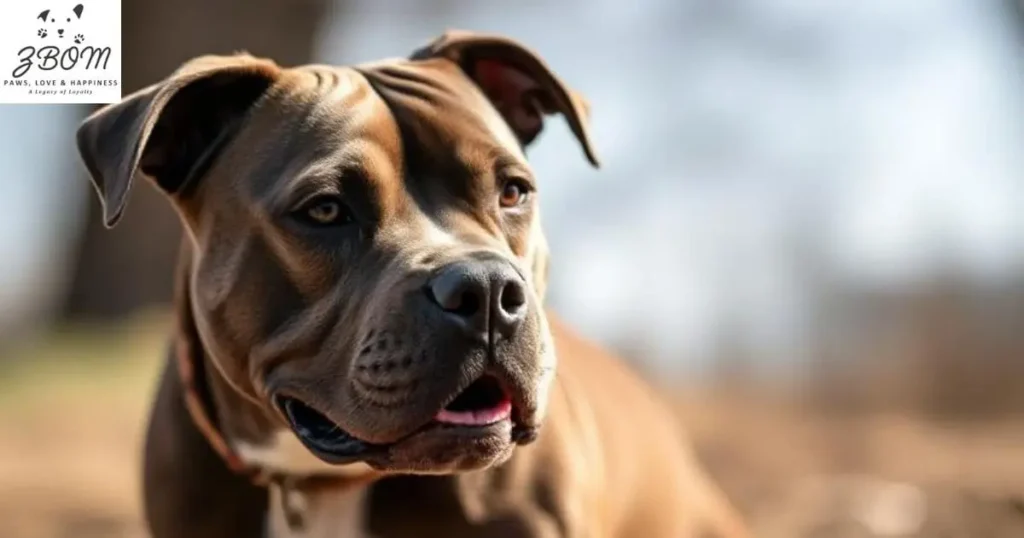
Currently, 37 states have either banned pit bulls completely or enacted breed-specific legislation targeting pit bulls and bully breeds. States like Arkansas and Colorado have dozens of cities prohibiting people from owning or transporting pit bulls. This widespread legislation reflects concerns about aggressive breeds and public safety.
Breed-specific legislation varies by location. Some states require owners to muzzle their pit bulls or put special green collars on them before public outings. Michigan and Ohio have cities with these specific requirements. Other jurisdictions completely ban pit bull ownership within city limits.
These bans and restrictions stem from both statistical evidence and myths about pit bulls. The propensity toward aggression from breeding history and frequent abuse provides factual basis for legislation. However, myths about locking jaws and claims that dog aggression inevitably leads to people aggression also influenced these laws.
The breed-specific legislation controversy reflects the bad reputation pit bulls carry. Advocates argue these dogs face discrimination based on appearance and negative stigma rather than individual behavior. Opponents cite dog attack statistics and mauling incidents as justification for protective legislation.
Pit bull owners must research local legislation before acquiring pitties. Violation of breed-specific laws can result in dog confiscation, fines, or criminal charges. Some owners face difficult choices when moving to areas with pit bull bans.
The vicious breed label applied through legislation affects pit bull reputation and owner stigma. Responsible owners face discrimination in housing, insurance, and public spaces due to breed-specific restrictions. This negative stigma persists even when individual pit bulls display excellent behavior.
Legislation also impacts shelter populations. Areas with pit bull bans see increased surrender rates as owners relocate or face enforcement. Animal shelters in non-restricted areas become overwhelmed with pit bulls displaced by legislation.
14. Pit Bull Owners Have a Negative Stigma
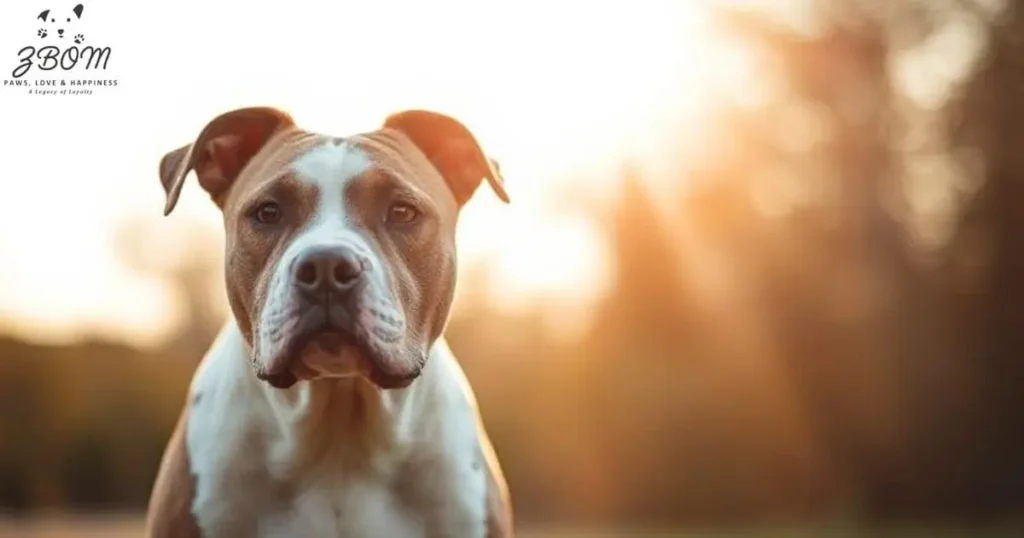
Pit bull owners commonly face negative stigma despite American pit bull terriers ranking as ninth most popular dogs in 2021. This stigma stems from news stories about pit bulls suddenly becoming aggressive and attacking pets or people. Walking pitties through town feels akin to carrying loaded weapons for many observers.
People sometimes view pit bull owners as criminals or unsavory characters. The association between pit bulls and the criminal element creates assumptions about owner character. Observers pigeonhole owners as irresponsible people inflicting dangerously vicious dogs upon society.
This negative stereotype ignores reality that many pittie owners are responsible people investing time and energy into training their dogs to be good canine citizens. Experienced dog owners who provide proper training, early socialization, and consistent management face unfair discrimination based solely on breed choice.
The negative stigma affects housing opportunities. Landlords frequently refuse pit bull owners regardless of individual dog behavior or owner responsibility. Insurance companies charge higher premiums or deny coverage entirely for pit bull ownership. These practical consequences compound social stigma.
Pit bull owners encounter fear and hostility during walks. Parents pull children away, people cross streets, and other dogs’ owners avoid interaction. This negative reception persists even when pit bulls display friendly, calm behavior. The intimidating appearance alone triggers stigmatized responses.
The breed of choice for criminals label particularly damages responsible owners. Drug dealers and criminal element individuals historically favored pit bulls as guard dogs and status symbols. This association unfairly tars all pit bull owners with criminality brush.
Responsible owners work to overcome negative stigma through exemplary dog management. Demonstrating proper training results, participating in canine citizen programs, and educating others helps counteract negative stereotypes. However, overcoming decades of bad reputation requires sustained effort.
15. Pit Bulls Are Territorial
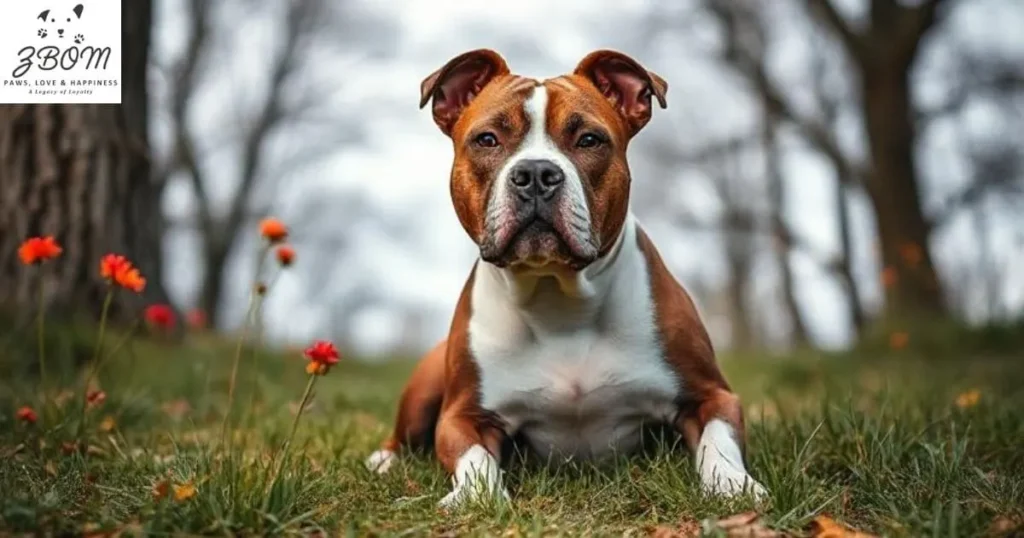
Pit bulls can indeed be territorial, displaying protective responses toward their property and families. Territorial behavior manifests through resource guarding of food and toys, but extends to broader territorial claims over spaces and people.
The protective nature of pit bulls drives territorial tendencies. These dogs form intensely loyal bonds with families, making them naturally protective of their human pack. This protective instinct combined with genetic disposition toward aggression creates potentially dangerous territorial behavior.
Territorial responses often target other dogs or animals entering pit bull territory. While most pit bulls won’t attack humans displaying territorial behavior, they frequently attack other dogs or animals perceived as intruders. This dog-aggressive tendency reflects breeding for animal combat.
Resource guarding represents localized territorial behavior over specific items. Pit bulls may bark, growl, or bare their teeth defending food, toys and possessions. This possessive aggression can escalate to biting when territorial claims are challenged.
Territorial behavior intensifies during pit bull maturity. Adult pit bulls reaching full physical maturity may become more territorial than they were as puppies. This temperament change during maturation catches inexperienced owners unprepared for managing increased territorial responses.
Proper training and early socialization help manage territorial tendencies. Teaching pit bulls that guests and other dogs aren’t threats reduces territorial aggression. Consistent training establishes that owners control territory, not dogs.
The protective nature making pit bulls territorial isn’t entirely negative. Responsible owners appreciate their dogs alerting to unusual situations. However, territorial behavior must remain controlled to prevent aggressive responses toward innocent visitors or passing animals.
Territorial displays combined with pit bull size and strength create intimidating scenarios. Even when dogs don’t bite, their bark and growl coupled with muscular build frightens people. Managing territorial behavior helps reduce public fear and negative stigma toward pit bull owners.
16. They Don’t Fully Mature For Two Years

Pit bulls take longer than most breeds to mature fully, typically requiring two and sometimes three years. This extended maturation period creates challenges for owners managing large, powerful dogs with puppy mentalities.
At one year to 18 months old, pit bulls reach full physical maturity but remain emotional and social puppies. Their size and muscular build reaches adult proportions while their behavior retains puppy impulsiveness. This disconnect between physical and emotional maturity makes them difficult to handle without early training.
The delayed maturity means pit bull puppies continue displaying puppy behaviors like jumping on people, mouthing and biting, and destructive chewing while possessing adult strength. Inexperienced owners struggle controlling what are essentially giant puppies with powerful bodies.
Pit bull maturity often brings temperament changes that surprise owners. Dogs that were friendly as puppies may develop dog aggression, territorial behavior, or resource guarding as they mature. These changes reflect genetic disposition and inherited traits becoming apparent.
Adult pit bulls reaching emotional and social maturity around two years need different management than puppies. Owners must adjust training approaches and expectations as dogs develop adult personalities. Consistent training throughout maturation period establishes stable behavior patterns.
The extended maturity period requires sustained training commitment. Early training starting at six to eight weeks must continue throughout the two-year maturation cycle. Owners who neglect ongoing training find their pit bulls developing bad behavior as they mature.
Physical maturity preceding emotional maturity creates window where pit bulls are most challenging. Large bodies combined with immature judgment produces potentially dangerous situations. Proper training and careful management during this period prevents development of problematic behaviors.
Understanding pit bull maturation timeline helps owners set realistic expectations. Recognizing that full maturity takes two years prevents owners from surrendering dogs during challenging adolescent phases. Patient owners who maintain consistent training through maturation succeed in raising stable adult pit bulls.
17. Pit Bulls Carry a Bad Reputation
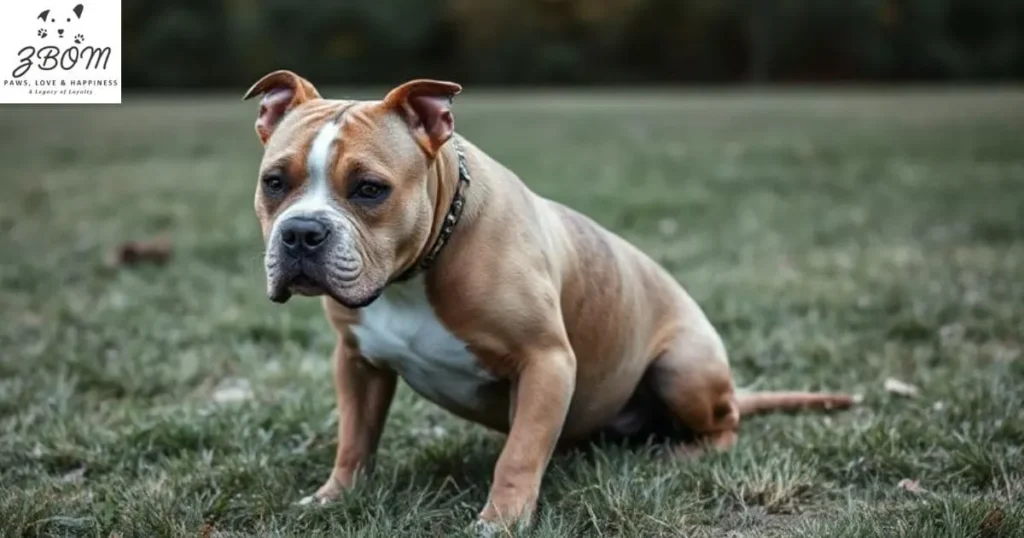
Pit bulls carry significant bad reputation despite once being America’s breed of choice for families. Historical shows like The Little Rascals popularized pitties with their dog Petey in the 1920s. From early 1900s through 1930s, Americans admired pit bulls for loyalty, bravery, friendliness, and hardworking nature.
The 1970s brought dramatic reputation reversal. Dog fighting increased dramatically, and pit bulls were treated cruelly to make them meaner. Breeders injected them with steroids
locking jaws, exaggerated bite force, and inevitable aggression also contribute unfairly to negative perceptions.
News coverage amplifies bad reputation by highlighting pit bull attacks while ignoring positive stories. Media preferentially reports mauling incidents involving pitties, creating perception these dogs are constantly dangerous. This reporting bias reinforces negative stigma and public fear.
The association with criminals and drug dealers severely damages reputation. Pit bulls became breed of choice for criminal element as guard dogs and status symbols. This connection creates assumptions that pit bull owners are unsavory characters, compounding bad reputation.
Backyard breeders conducting random breeding perpetuate reputation problems. Overbreeding and inbreeding produce unstable dogs that end up in shelters and eventually with inexperienced owners. These poorly bred dogs contribute disproportionately to attack statistics, worsening bad reputation.
Responsible owners work tirelessly to improve pit bull reputation through education and exemplary dog management. Demonstrating that proper training, early socialization, and patient ownership produces loyal, friendly pit bulls helps counter negative narratives. However, overcoming entrenched bad reputation requires sustained community effort.
The bad reputation creates practical consequences beyond social stigma. Breed-specific legislation, insurance discrimination, housing restrictions, and employment barriers all stem from pit bull reputation problems. These systemic barriers affect even responsible owners with well-behaved dogs.
Rehabilitating pit bull reputation requires addressing both legitimate concerns and dispelling myths. Honest discussion about genetic disposition toward dog aggression while emphasizing individual variation and training importance creates balanced perspective. Combating myths with facts helps reduce unwarranted fear while maintaining appropriate caution.
18. Backyard Breeders Are Carrying Out Random Breeding

Backyard breeders represent significant problem for pit bull welfare and public safety. These irresponsible and unethical individuals breed dogs repeatedly to make money, conducting random breeding without regard for genetics, health, or temperament. Overbreeding and inevitable inbreeding produces genetic defects and health problems.
Backyard breeders use mother dogs until they’re physically depleted, then discard them when no longer profitable. These exhausted mama dogs often end up in animal shelters with severe health issues. The breeding conditions are typically appalling, with inadequate vet care, nutrition, and humane treatment.
Random breeding without genetic screening produces pit bulls with unstable temperaments and pronounced aggressive tendencies. Backyard breeders ignore genetic disposition factors, breeding dogs regardless of behavioral problems. This creates pit bulls with intensified inherited traits toward aggression and instability.
The overbreeding floods shelters with unwanted pit bulls. Backyard breeder operations produce far more puppies than responsible homes exist. These dogs populate animal shelters at alarming rates, with pit bulls being most surrendered breed largely due to backyard breeding practices.
Shelter dogs from backyard breeders often go to inexperienced owners who cannot manage them. Without proper training and lacking understanding of genetic issues, these owners struggle with aggressive dogs. This leads to more attacks, maulings, and surrenders, perpetuating vicious cycle.
Backyard breeding contributes directly to pit bull bad reputation. Poorly bred dogs with genetic defects, inadequate early socialization, and unstable temperaments commit disproportionate attacks. These incidents reinforce negative stereotypes and fuel breed-specific legislation.
The inbreeding practiced by backyard breeders concentrates negative genetic traits. Close breeding intensifies genetic disposition toward aggression, health problems, and behavioral instability. Genetic defects include physical deformities and neurological issues affecting temperament.
Backyard breeders often supply fighting dogs to illegal dog fighting operations. They breed specifically for aggression and tenacity, selecting breeding stock from lines with maximum fighting ability. These dogs represent most dangerous pit bull bloodlines.
Combating backyard breeding requires public education and enforcement. Responsible prospective owners must avoid supporting backyard breeders by purchasing only from reputable sources or adopting from shelters. Stricter breeding regulations and licensing requirements help reduce random breeding operations.
19. They Are the Most Surrendered Breed of Dog

Pit bulls are the most surrendered breed to animal shelters, populating these facilities at alarming rates. Multiple factors contribute to surrender rates, but results devastate individual dogs and overwhelm shelter resources.
Backyard breeders discard mama dogs when they’re no longer profitable, dumping exhausted females at shelters. These dogs often have severe health problems from repeated pregnancies, inadequate vet care, and abuse. Breeding females represent significant portion of pit bull shelter population.
Inexperienced owners adopt pit bulls without understanding care requirements, then surrender animals when reality exceeds expectations. People underestimate copious amounts of exercise needs, training demands, and strength management challenges. When pit bulls display natural behavior like destructive chewing or separation anxiety, unprepared owners surrender them.
Separation anxiety is the number one cause of pit bull surrenders. When pitties suffer anxiety from being left alone, they engage in bad behavior including destructive actions, howl continuously, and bathroom accidents. Owners unable to manage anxiety-related problems surrender dogs rather than addressing underlying issues.
The illegal dog fighting realm brings multitudes of dogs to shelters. Fighting dogs rescued from operations or abandoned by operators arrive with injuries, severe anxiety, and effects of neglect and abuse. These dogs often have starve and mistreat histories, were beat, had ears cut off, and suffered extensive trauma.
Shelter dogs with fighting backgrounds carry unstable histories that make adoption challenging. Many people are unwilling to take chances on dogs with unknown aggressive histories. These pit bulls languish in shelters for prolonged periods, and many are never adopted.
Breed-specific legislation forces surrenders when owners relocate to areas with pit bull bans. Owners moving to restricted jurisdictions must choose between their dogs and housing, employment, or family situations. These forced surrenders increase shelter populations in areas accepting pit bulls.
Financial hardship causes surrenders when owners cannot afford vet care for health problems. Pit bulls prone to skin infections, allergies, hip dysplasia, and skin cancer require regular health check-ups and medical treatment. Owners facing expensive health issues sometimes surrender dogs rather than providing necessary vet care.
The most surrendered breed status means shelters euthanize approximately one million pit bulls yearly. Pitties comprise significant percentage of shelter populations—they represent 6% of all dogs but much higher percentage of shelter dogs. This overrepresentation leads to mass euthanasia as shelters lack resources to house them indefinitely.
Rescue organizations struggle to keep pace with pit bull surrender rates. Despite dedicated efforts, rescue capacity cannot match the flood of pit bulls entering shelters. The combination of backyard breeding, owner unpreparedness, fighting operations, and legislation creates unsustainable surrender numbers.
20. They Are the Breed of Choice For Criminals
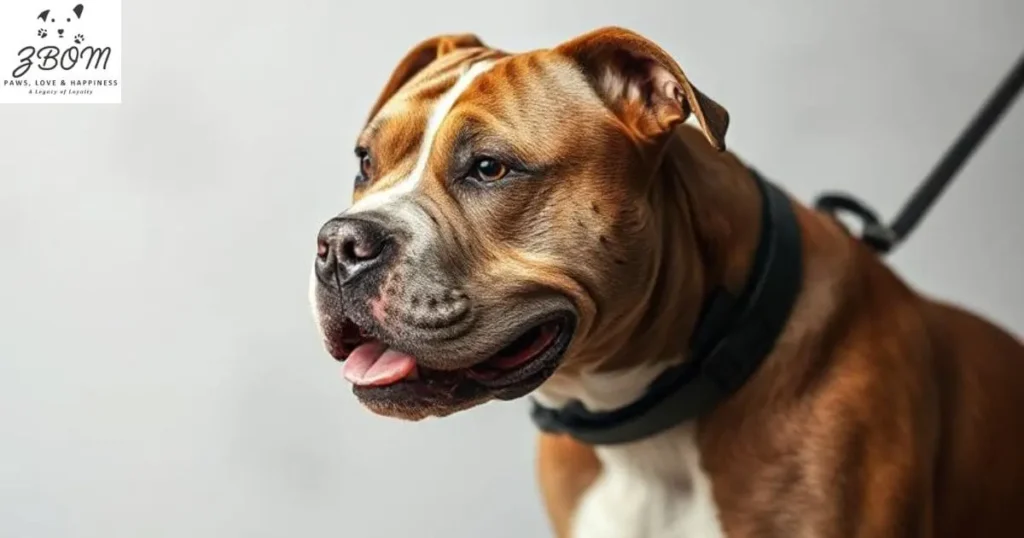
Pit bulls became the breed of choice for criminals beginning in the 1970s. Drug dealers and criminal element individuals favor pit bulls as guard dogs protecting drug caches and money. These dogs serve dual purposes—guarding property and warning owners of police or approaching threats.
The criminal preference stems from pit bull characteristics making them effective security animals. Their intimidating appearance, tenacity, and inbred aggressive tendencies make them valuable assets for criminal operations. The size and muscular build naturally deters intruders and rivals.
Criminals often inject pit bulls with anabolic steroids and amphetamines to increase size, strength, and aggression. These chemical enhancements create unnaturally aggressive dogs with reduced inhibition and heightened violence. Steroids transform already powerful dogs into dangerous weapons.
For some criminals, pit bulls serve as status symbols beyond practical utility. Owning feared, aggressive dogs projects power and intimidation within criminal communities. The dogs become extensions of owner identity and reputation.
Police reports document criminals siccing their pit bulls on others for slight provocations. These dogs are weaponized, trained specifically to attack on command. Criminal owners cultivate maximum aggression through abuse, neglect, and deliberate training for violence.
The criminal element association severely damages pit bull reputation and creates negative stigma for all owners. Responsible owners face discrimination because pit bulls are linked with criminality in public perception. This unfair association makes people assume pit bull owners are unsavory characters.
Illegal dog fighting operations run by criminal element individuals breed pit bulls specifically for combat. These fighting dogs receive horrific treatment—starve and mistreat, beat, ears cut off, and constant abuse to maintain aggression. When operations are busted or dogs escape, these traumatized animals enter shelters.
The breed of choice status means many pit bulls in criminal hands eventually are abandoned, confiscated, or escape. These dogs arrive at shelters with severe behavioral problems from abuse and improper training for aggression. Their histories make them difficult to rehabilitate and adopt.
Breaking the criminal association requires changing public perception through education. Highlighting responsible owners who raise well-behaved pit bulls helps counteract criminal element stereotype. However, as long as criminals favor pit bulls, the breed will struggle escaping this negative association.
Law enforcement crackdowns on illegal dog fighting and stronger penalties for using dogs as weapons help reduce criminal exploitation. Removing pit bulls from criminal environments and rehabilitating abused dogs benefits both animals and public safety.
21. They Are Dog-Aggressive
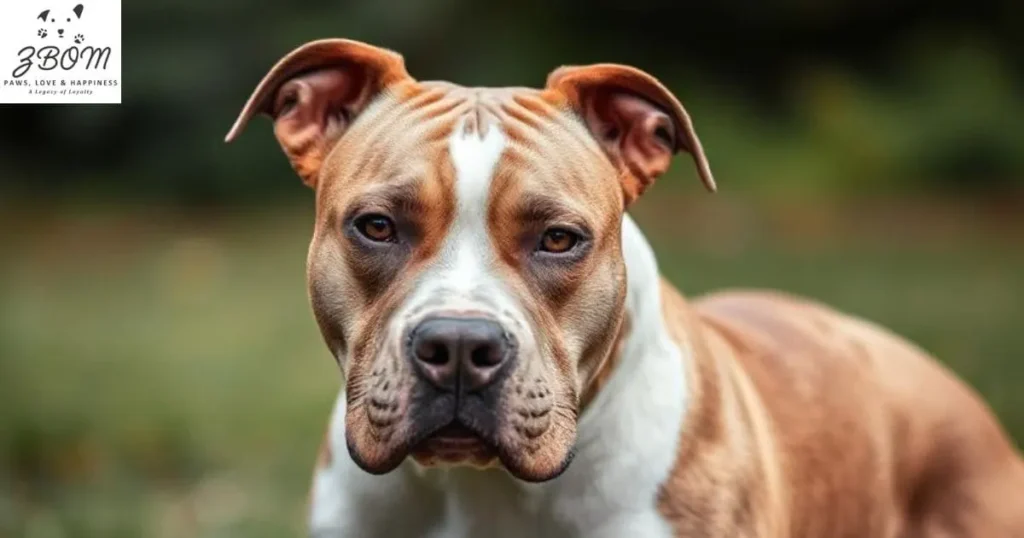
Pit bulls are inherently dog-aggressive, born with instincts to fight other dogs. This dog aggression stems from breeding pit bulls specifically for combat with other dogs. Pit bull genetics carry inherited traits emphasizing animal-directed aggression while de-emphasizing people aggression.
However, early socialization and correct training can help pit bulls become tolerant of other canines. Proper training beginning in puppyhood exposes pit bulls to other dogs in controlled, positive contexts. Early socialization doesn’t eliminate genetic disposition but can manage dog-aggressive tendencies.
Any dog can become dog-aggressive, but pit bulls carry inbred predilection for this behavior hard-wired into their brains. Genetics plays a part in making pit bulls more likely to display dog aggression than most breeds. This inherited trait reflects generations of selective breeding for combat effectiveness.
Adult pit bulls may get along great with other dogs and cats for years, then suddenly display dog aggression. This temperament change can be traced to breeding history and genetic disposition. The dog-aggressive instinct can emerge during pit bull maturity even in previously friendly dogs.
Dog aggression represents the most predictable aggressive tendency in pit bulls. While many pitties never show people aggression, dog-aggressive behavior appears much more commonly. Owners must supervise pit bulls around other dogs even when they’ve shown friendliness previously.
The dog-aggressive nature makes pit bulls challenging in multi-dog households and public spaces. Dog parks pose particular risks as pit bulls may react aggressively to other canines. Territorial behavior combined with dog aggression creates dangerous situations when other dogs enter pit bull territory.
Proper training and management can prevent dog-aggressive incidents but cannot eliminate underlying predisposition. Responsible owners recognize their pit bulls’ dog-aggressive potential and take precautions. Keeping pit bulls leashed, avoiding dog parks, and supervising all interactions with other dogs prevents tragedy.
Dog aggression doesn’t automatically lead to people aggression despite common myths. Pit bulls were bred to be aggressive toward animals while remaining friendly toward humans. However, dog-aggressive episodes can inadvertently harm people attempting intervention.
Understanding dog aggression as separate from people aggression helps owners manage pit bull behavior appropriately. Early socialization with other dogs, consistent training, and realistic expectations about genetic limitations allow safe pit bull ownership despite dog-aggressive tendencies.
22. Pit Bulls Represent the Majority of All Dog Attacks
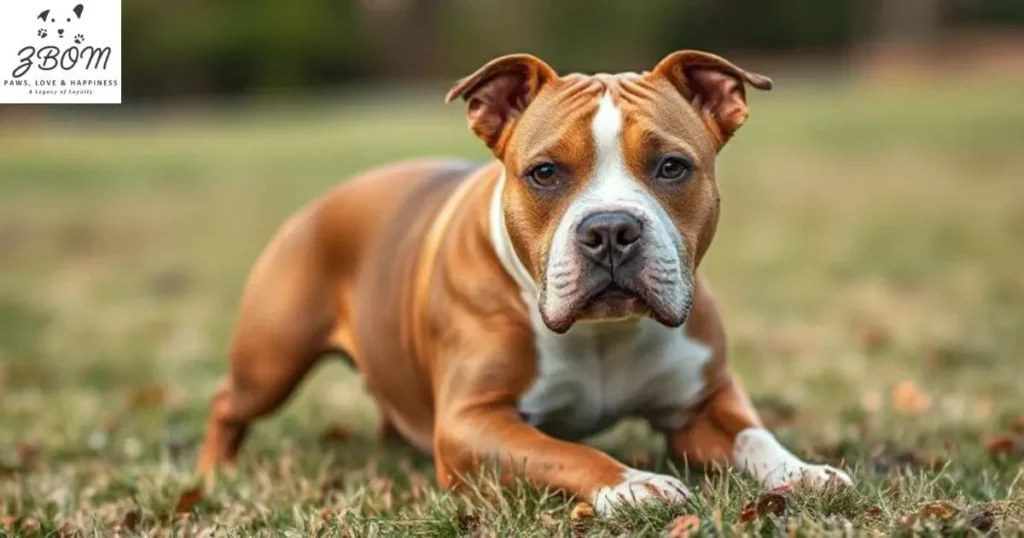
Pit bulls represent merely 6% of total dogs nationally, yet account for 68% of dog attacks since 1982 and 52% of deaths resulting from attacks. These astounding statistics confirm pit bulls cause disproportionate attacks and fatalities relative to population.
The attack numbers reflect combination of factors: genetic disposition toward aggression, irresponsible owners, abuse and mistreatment, and breeding history for combat. Pit bulls involved in attacks often have histories of neglect, inadequate training, and sometimes deliberate cultivation of aggression.
Mauling incidents involving pit bulls produce more severe injuries than attacks by other breeds. The combination of strong bite force, tenacious fighters mentality, and refusal to release creates devastating trauma. Pit bull attacks typically involve sustained assault rather than single defensive bite.
Attack statistics show pit bulls cause more animal and human attacks than any other breed. This dominance in attack data drives breed-specific legislation and public fear. The numbers are undeniable evidence that pit bulls present unique public safety challenges.
Fatal attack statistics particularly implicate pit bulls. The dog-bite-related deaths data shows pit bulls responsible for more fatalities than all other breeds combined in many years. These deadly outcomes reflect pit bull capability to inflict lethal trauma.
However, attack statistics must be understood within context of mistreatment. Pit bulls are the most abused dog breed, and abuse directly correlates with aggressive behavior. Many pit bulls involved in attacks suffered starve and mistreat conditions, were beat, and deliberately trained for aggression.
Inexperienced owners contribute significantly to attack statistics. People adopt pit bulls without understanding training needs, exercise requirements, and behavioral management demands. These unprepared owners create situations where pit bulls develop aggressive tendencies leading to attacks.
Backyard breeders producing poorly socialized, genetically unstable pit bulls feed attack statistics. Dogs from random breeding operations with genetic defects and behavioral problems populate shelters, then go to inexperienced owners who cannot manage them. These dogs disproportionately contribute to attack incidents.
Responsible owners who provide proper training, early socialization, adequate exercise, and appropriate management rarely have dogs involved in attacks. The multitude of well-behaved pit bulls that never attack demonstrates that responsible ownership significantly reduces attack risk.
The attack statistics, while concerning, shouldn’t condemn all pit bulls or owners. However, they demand acknowledgment that pit bulls pose greater statistical risk than most breeds. Addressing attack rates requires targeting irresponsible ownership, backyard breeding, and dog fighting rather than blanket breed condemnation.
23. They Are the Most Abused Dog in the World

Pit bulls are tragically the most abused and neglected dogs of any breed worldwide. The breed overrepresents abused dog populations to such extent that the Animal Justice League of America created dedicated website for reporting pit bull abuse and neglect. The scale and severity of pit bull mistreatment is staggering.
Pit bulls are frequently used in illegal dog fighting despite prohibitions. Owners starve and mistreat fighting dogs to maintain aggression and mean dispositions. They cut their ears off without anesthesia, beat them regularly, and subject them to constant trauma. This systematic abuse creates severely traumatized animals.
Female pit bulls suffer particular abuse as breeding stock for backyard breeders and fighting operations. These dogs are forced to produce litter after litter until physically destroyed, then recklessly abandoned or killed. The mama dogs used in overbreeding schemes experience continuous abuse and neglect throughout their shortened lives.
Criminals and drug dealers who use pit bulls as guard dogs often treat them cruelly to maintain aggressive dispositions. These dogs live chained, underfed, and isolated. Their owners inject them with anabolic steroids and amphetamines, creating chemically altered, dangerous animals. The abuse serves to weaponize dogs for criminal purposes.
The abuse statistics are horrifying: approximately one million pit bulls are euthanized yearly, representing 6% of all dogs but comprising much higher percentage of shelter dogs. Many arrive at animal shelters bearing physical evidence of abuse—scars, missing ears, broken bones, and severe neglect damage.
Pit bulls in abuse situations endure starvation, beatings, untreated medical conditions, and complete lack of vet care or proper nutrition. Neglect manifests as untreated skin infections, allergies, injuries, and other health problems. Dogs live in filth without adequate shelter, water, or human kindness.
The most abused status directly contributes to aggressive behavior and attack statistics. Dogs subjected to mistreatment, starve and mistreat conditions, and beatings develop fear aggression, defensive biting, and sometimes redirected aggression toward anyone available. Abuse creates the aggressive dogs that fulfill negative pit bull stereotypes.
Rescue organizations work tirelessly saving abused pit bulls, but capacity cannot match need. Shelter dogs with abuse histories require extensive rehabilitation, specialized training, and patient adopters willing to work through trauma-related behavioral problems. Many never find appropriate homes.
Breaking the abuse cycle requires stronger legal penalties for dog fighting, animal cruelty, and neglect. Public education about recognizing and reporting abuse helps identify suffering dogs earlier. Supporting rescue organizations and responsible breeding practices reduces pit bull populations entering abuse situations.
The most abused dog designation is heartbreaking indictment of human cruelty and irresponsible ownership. Pit bulls suffer disproportionately because their intimidating appearance and reputation attract precisely the wrong owners—those seeking weapons rather than companions. Protecting pit bulls from abuse requires systemic changes in how society manages breeding, ownership, and animal welfare enforcement.
Conclusion
Addressing pit bull behavior problems comes down to one simple truth: these dogs need owners who understand what they’re getting into and commit fully from day one. The genetic disposition toward dog aggression, tenacity, and high pain tolerance isn’t going away—it’s built into pit bull genetics from generations of breeding. You can’t wish it away, but you can manage it through early training, consistent boundaries, and realistic expectations.
Most behavior problems that get pit bulls surrendered to shelters are preventable. Destructive chewing, separation anxiety, resource guarding, and jumping on people all respond to proper training started early. The key is beginning at six to eight weeks and maintaining consistent training through the full two-year maturation period. Inexperienced owners who skip early socialization or ignore warning signs create the aggressive dogs that make headlines and worsen breed reputation.
But let’s be honest—pit bulls aren’t for everyone. They require copious amounts of exercise, professional training, and experienced dog owners who can handle their size and strength. If you can’t commit to daily exercise, afford vet care for potential health problems, or deal with negative stigma and breed-specific legislation, choose a different breed. There’s no shame in recognizing pit bulls demand more than you can give.
The cycle of abuse, backyard breeding, and irresponsible owners keeps flooding shelters with damaged pit bulls that end up euthanized. Breaking this cycle requires responsible breeding, reporting abuse, and only adopting when you’re truly prepared for the commitment.
FAQ
Do Pit Bulls have behavioral issues?
Pitbull-type dogs are highly demonstrative, emotional dogs that react emotionally, are hard to control, and have a tendency to overreact in different situations.
What triggers Pit Bulls to be aggressive?
A tendency toward aggression can result from breeding dogs for protection, dog fighting, social status, financial gain, abuse, neglect, chaining, tethering, inadequate obedience training, and inadequate supervision.
Do pitbulls warn before attacking?
There were no warning signs before a pitbull attack; investigators reported two pit bulls escaped under a fence, attacked a man walking by, and a neighbor heard calls for help, grabbed a gun, and began shooting.
What is a red flag dog’s behavior?
Signs like growling, baring teeth, snapping, and biting can stem from fear, territorial instincts, protection, or past trauma; ignoring aggression creates dangerous situations for your dog and others.
How do dogs say sorry after biting you?
A dog saying sorry may use puppy eyes, tuck its tail, avoid eye contact, lower ears, apologize, and watch your reaction.
